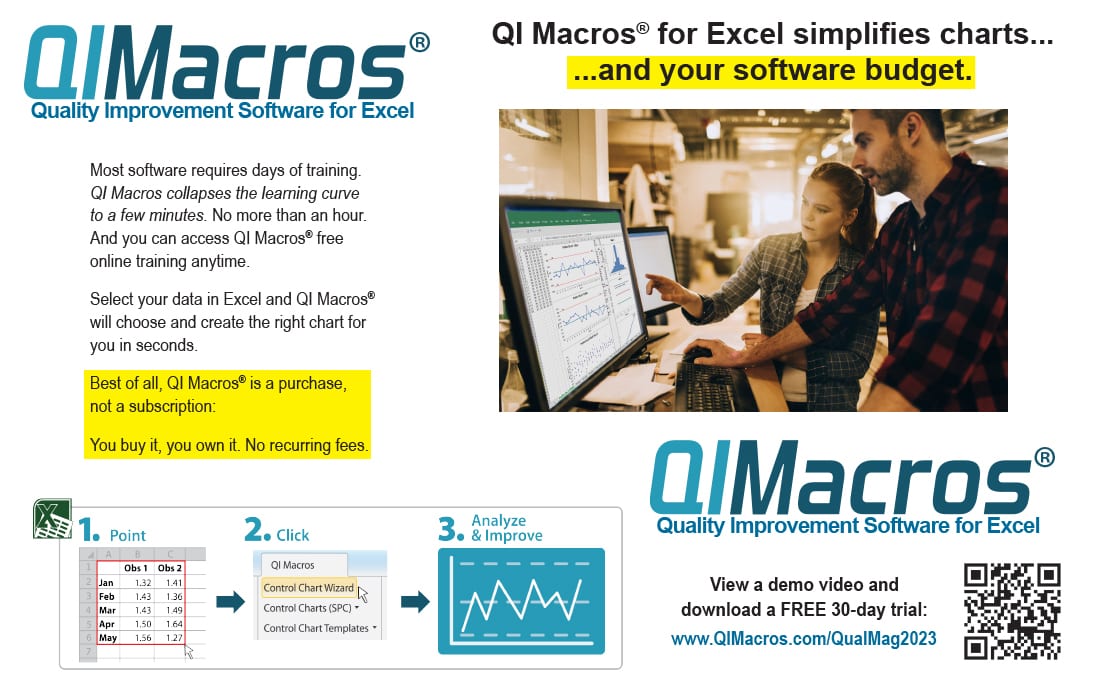Speaking of Quality
Tash Baksh
Speaking of Quality | Tash Baksh
These situations are going to keep coming. Here’s how to deal with them.
Common Pushbacks that Quality Professionals Hear

Quality professionals quickly learn that they need to deal with a barrage of situations where their expertise is required to intervene, provide perspective, or in some cases lead teams to come up with a solution.
These situations are going to keep coming; quality professionals need to have a foundation in place to deal with them effectively. A key aspect of this is to know about the organization’s strategic goals and the relationships with their people. An opportunity may be missed if the solution doesn’t come from a joint effort with the individuals who are directly involved in the areas we are tasked with improving.
Here are the most frequent situations that quality professionals may encounter, along with advice on how to handle them.
That’s Cost Prohibitive
Making the business case for the initiatives is a skill that a quality professional must acquire.
Although time and money are essential factors when seeking the support of senior leaders, don’t start the conversation there. Starting with how much it will cost in terms of time and money is incorrect.
This will lead to negative replies; instead begin with the reason why the team should do something. It’s easier to make a convincing argument once the team can relate to what they think needs to be done to achieve a business purpose or strategic objectives.
Although there are tools available (such as Return on Investment Models) to assist in showing the financial impact of quality improvement efforts, they are only helpful if they enable the team to relate what they are doing to a larger context. Supporting a wider organization strategy is a better approach, it doesn’t necessarily matter even if the organization receives a high return on their investment or that it justifies investing the money. Consider starting instead by outlining how the quality improvement program contributes to the organization’s strategic plan.
Starting with how much it will cost in terms of time and money is incorrect.
This is Low Priority
Creating agreement on risk levels is essential for overcoming upper management’s objections to what is seen as not a key item.
Look at what people believe to be the true problems if the quality professional finds their initiatives are not being approved or people are opposing them. Seek to get the organization to agree on what the problems are. When everyone agrees on the problem, solutions are welcomed.
Work together to determine the risks that are most important in terms of probability of occurrence and severity of impact. Gaining consensus on the most significant risks makes for a more appealing solution.
Key skills that the quality professional should develop are consensus building and negotiation. These skills should be used early in developing quality improvement proposals or initiatives.
The initiative should focus on particular risks that by consensus are the most important, so there is no reason to delay implementing a solution.
This is not a big risk
Does the quality professional already know what the biggest hazard and risks are to personnel and customers? This should be a starting point to pilot improvements. Engage everyone; the best ideas are not usually someone else’s. Sometimes the team members involved in the process or activity may have the solution. Seeking to capture this information will not be easy until there is trust and some strong relationships. Building these relationships require work and intentionality.
Creating an environment where team members feel safe enough to speak up is critical. If team members don’t speak up, there is usually a reason. Start by demonstrating openness and creating an environment where team members feel they will be heard. Be diligent and persevere. If the answer is not found, ask again.

